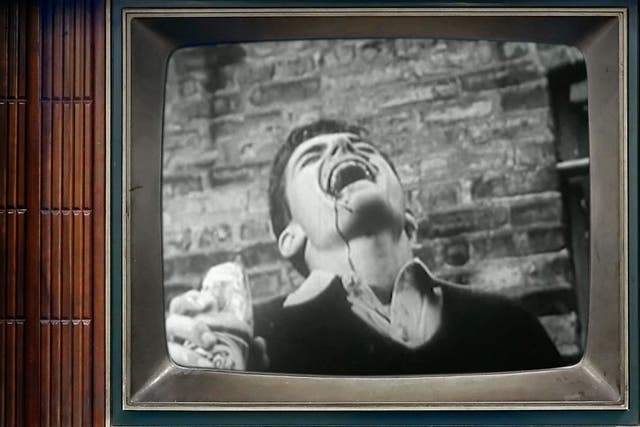
American colonists were once encouraged to grow and cultivate cannabis for hemp, but it all changed when the plant's more "medicinal" uses were discovered.
Updated: April 17, 2020 | Original: April 20, 2018

History Flashback takes a look at historical “found footage” of all kinds—newsreels, instructional films, even cartoons—to give us a glimpse into how much things have changed, and how much has remained the same.
No matter the decade, one thing never changes: parents will always be worried about the effect peer pressure has on their children. In the 1950s, access to cars became much more common for American teenagers. This gave them a variety of freedoms unimaginable to previous generations. That newfound autonomy brought with it all-new temptations, and their parents freaked out. For a great deal of those petrified parents, Marijuana became public enemy number 1.
To combat this, Encyclopedia Britannica produced this mental hygiene film to warn kids about the dangers of smoking pot. After all, who would want to risk becoming like poor Marty? In just a few short weeks after taking one puff at a party, he devolved from an upstanding young boy to a full-fledged drug addict and petty criminal. Realistic? No. A hilarious time capsule of the 1950s? Absolutely.
Hemp and marijuana are both produced from the cannabis plant, although hemp is derived from a strain that has a much lower quantity of THC, the compound that produces hallucinogenic effects. Hemp is made from the fibers of the plant and historically has been used to make a broad variety of products, from rope to cloth to paper. As you can imagine, it was an important product in the New World as the American colonies were being established. It was so important, in fact, that in 1619, Virginia The Rise of Reefer Madness
The popular image of the 1950s may be all Leave It to Beaver, but underneath the pearls and penny loafers, there was a countercultural movement bubbling to the surface. The Cab Calloway, who had a hit with his song The Roots of Criminalization
The process of criminalizing marijuana had already begun, even before the Beats took up the cannabis cause. The roots of this movement are mired in a racism that still persists in how drug policies are carried out in the U.S. today.
In the 1930s, Prohibition was repealed in the middle of the Great Depression. Straight-laced bureaucrats looking for another target turned their attention to marijuana, which, at the time, was mostly being used in the Mexican and black communities. They